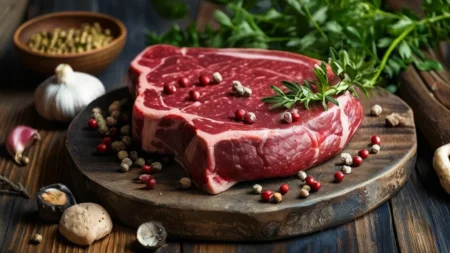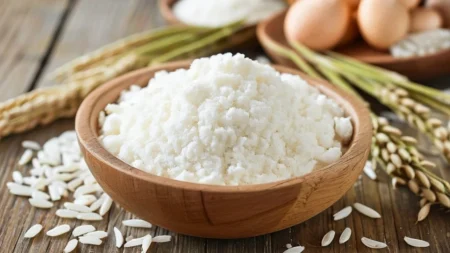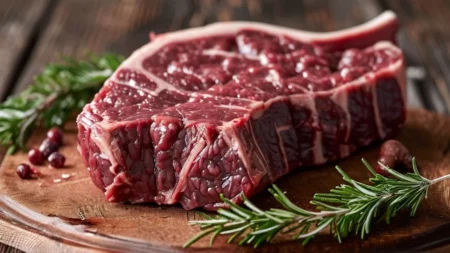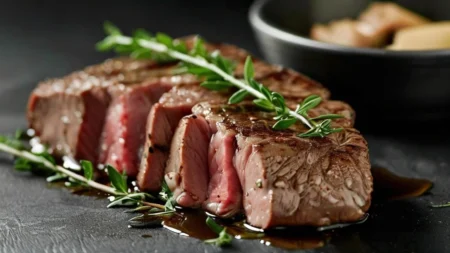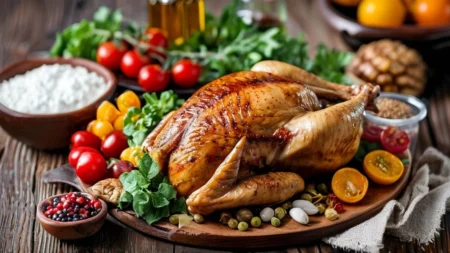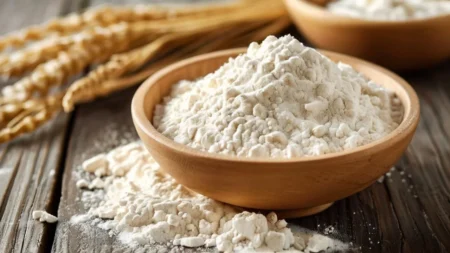Pork Tenderloin, A Lean and Versatile Cut for Delicious Meals
Key Takeaways:
- Pork tenderloin is one of the leanest cuts of pork, known for its mild flavor and tender texture.
- It’s a great source of protein and essential nutrients while being lower in fat compared to other pork cuts.
- Versatile in cooking, pork tenderloin can be grilled, roasted, or stir-fried, making it suitable for various cuisines.
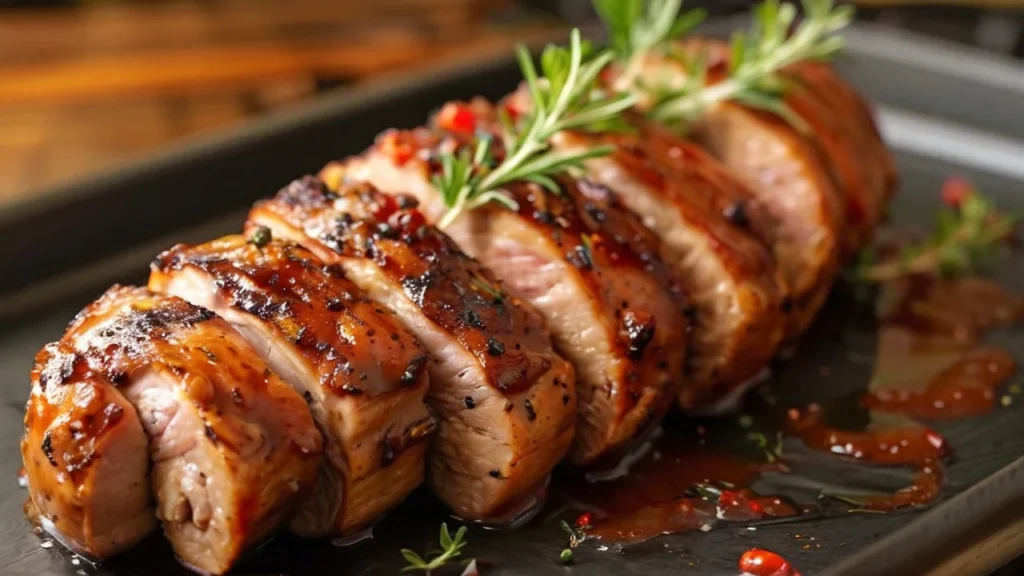
Nutritional Profile of Pork Tenderloin
Pork tenderloin is not only flavorful but also packed with nutrients. Here’s a breakdown of the nutritional values per 100 grams of cooked pork tenderloin:
| Nutrient | Amount |
|---|---|
| Calories | 143 kcal |
| Protein | 26 grams |
| Total Fat | 3.5 grams |
| Saturated Fat | 1 gram |
| Carbohydrates | 0 grams |
| Vitamin B6 | 0.6 mg (32% DV) |
| Niacin (B3) | 9.2 mg (46% DV) |
| Phosphorus | 230 mg (33% DV) |
| Selenium | 30 mcg (55% DV) |
| Zinc | 2 mg (18% DV) |
High in Protein
Pork tenderloin is an excellent source of high-quality protein, essential for muscle repair and overall body function.
Low in Fat
With its low fat content, pork tenderloin is a healthy choice for those looking to manage their fat intake while still enjoying flavorful meat.
Cooking Methods for Pork Tenderloin
Pork tenderloin’s versatility allows for various cooking methods, each enhancing its tenderness and flavor:
1. Grilling
Grilling pork tenderloin adds a smoky flavor and crispy exterior. Marinate before grilling to enhance taste and tenderness.
2. Roasting
Roasting is a simple method that brings out the meat’s natural flavors. A slow roast at a moderate temperature ensures even cooking.
3. Stir-Frying
Cutting pork tenderloin into strips for stir-frying is a quick way to prepare a healthy meal. Combine it with fresh vegetables and a light sauce for a balanced dish.
Health Benefits of Pork Tenderloin
1. Lean Protein Source
Pork tenderloin is a great option for those seeking lean protein, making it suitable for weight management and muscle building.
2. Rich in B Vitamins
Packed with B vitamins, particularly B6 and niacin, pork tenderloin supports energy metabolism and overall health.
3. Versatile and Easy to Cook
Its adaptability in recipes allows for a range of flavors, from sweet and savory to spicy and tangy, making it a favorite in many households.
Flavor Pairings with Pork Tenderloin
Pork tenderloin pairs well with a variety of flavors, enhancing its natural taste:
| Flavor Profile | Suggestions |
|---|---|
| Herbs and Spices | Rosemary, thyme, garlic, paprika |
| Fruits | Apples, peaches, pineapples, cherries |
| Sauces | Barbecue sauce, mustard, teriyaki, balsamic glaze |
| Vegetables | Asparagus, Brussels sprouts, sweet potatoes |
Popular Dishes Featuring Pork Tenderloin
Pork tenderloin can be used in numerous delicious dishes:
| Dish | Description |
|---|---|
| Stuffed Pork Tenderloin | Filled with spinach, cheese, or nuts, then roasted. |
| Pork Tenderloin Stir-Fry | Sliced and cooked quickly with vegetables and sauce. |
| Grilled Pork Tenderloin | Marinated and grilled, served with a fresh salad. |
| Pork Tenderloin Tacos | Shredded or sliced pork served in tortillas with toppings. |
| Slow-Cooked Pork Tenderloin | Cooked with herbs and broth for a tender dish. |
Tips for Cooking Pork Tenderloin
1. Marinate for Extra Flavor
Using a marinade can add depth of flavor and tenderness. Aim for at least 30 minutes to soak in the flavors.
2. Use a Meat Thermometer
To avoid overcooking, use a meat thermometer. The internal temperature should reach 145°F (63°C) for optimal juiciness.
3. Let It Rest
After cooking, allow the pork tenderloin to rest for a few minutes. This helps retain moisture and enhances flavor.
Conclusion
Pork tenderloin is a delicious, lean cut of meat that is perfect for a variety of dishes. With its high protein content and low fat, it offers numerous health benefits while remaining versatile in the kitchen. Whether grilled, roasted, or stir-fried, pork tenderloin can be a delightful addition to any meal.
FAQ
Q: Is pork tenderloin healthy?
A: Yes, pork tenderloin is a lean protein source that is low in fat and rich in essential nutrients.
Q: What’s the best way to cook pork tenderloin?
A: Grilling, roasting, and stir-frying are excellent methods for preparing pork tenderloin.
Q: How long should I cook pork tenderloin?
A: Cook pork tenderloin until it reaches an internal temperature of 145°F (63°C), which usually takes about 20-30 minutes, depending on the method.
Q: Can I freeze cooked pork tenderloin?
A: Yes, cooked pork tenderloin can be frozen for up to 3 months. Make sure to store it in an airtight container.
Q: What are some good sides to serve with pork tenderloin?
A: Great side dishes include roasted vegetables, mashed potatoes, or a fresh salad.





